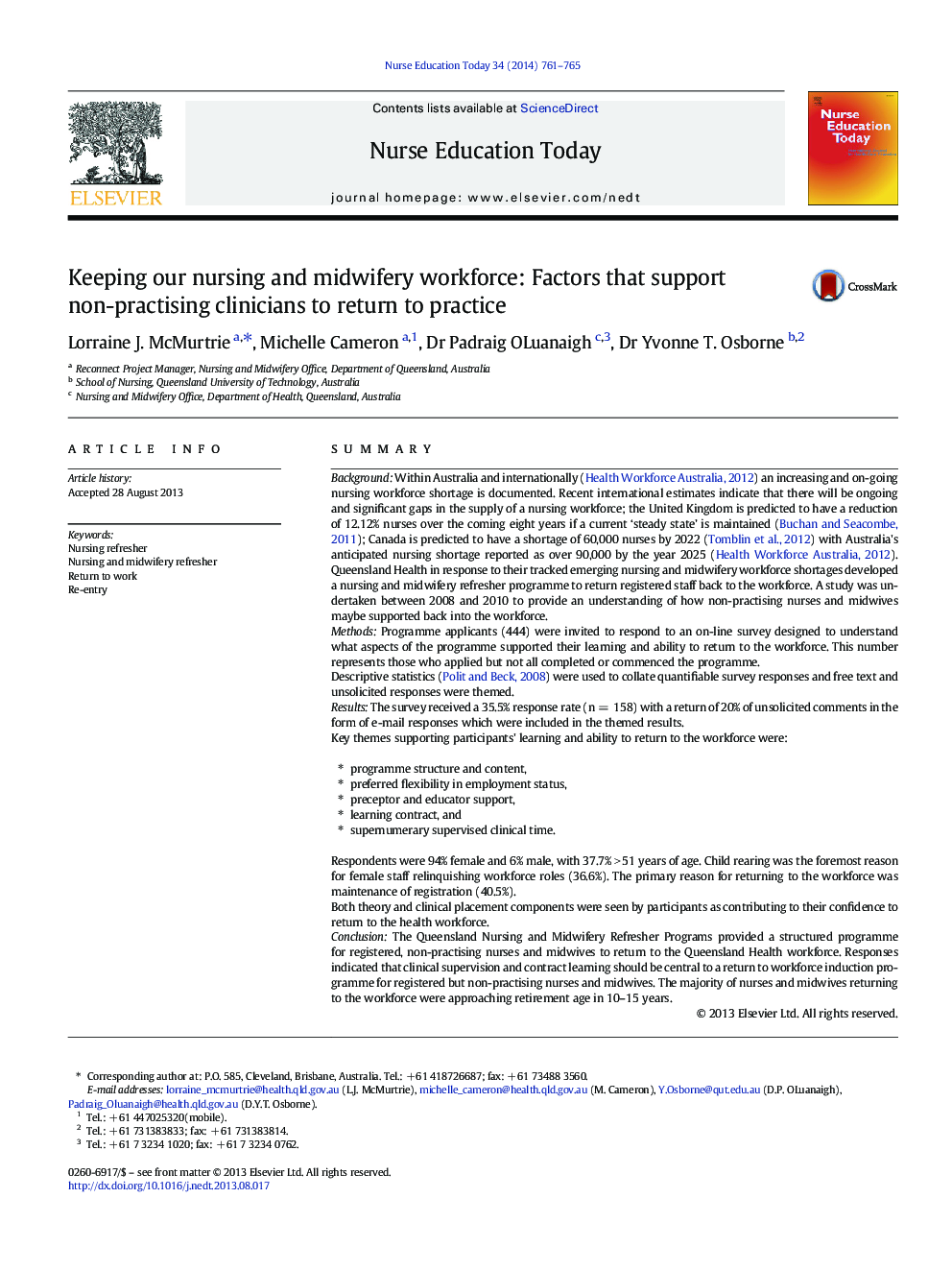| کد مقاله | کد نشریه | سال انتشار | مقاله انگلیسی | نسخه تمام متن |
|---|---|---|---|---|
| 368320 | 621574 | 2014 | 5 صفحه PDF | دانلود رایگان |
SummaryBackgroundWithin Australia and internationally (Health Workforce Australia, 2012) an increasing and on-going nursing workforce shortage is documented. Recent international estimates indicate that there will be ongoing and significant gaps in the supply of a nursing workforce; the United Kingdom is predicted to have a reduction of 12.12% nurses over the coming eight years if a current ‘steady state’ is maintained (Buchan and Seacombe, 2011); Canada is predicted to have a shortage of 60,000 nurses by 2022 (Tomblin et al., 2012) with Australia's anticipated nursing shortage reported as over 90,000 by the year 2025 (Health Workforce Australia, 2012). Queensland Health in response to their tracked emerging nursing and midwifery workforce shortages developed a nursing and midwifery refresher programme to return registered staff back to the workforce. A study was undertaken between 2008 and 2010 to provide an understanding of how non-practising nurses and midwives maybe supported back into the workforce.MethodsProgramme applicants (444) were invited to respond to an on-line survey designed to understand what aspects of the programme supported their learning and ability to return to the workforce. This number represents those who applied but not all completed or commenced the programme.Descriptive statistics (Polit and Beck, 2008) were used to collate quantifiable survey responses and free text and unsolicited responses were themed.ResultsThe survey received a 35.5% response rate (n = 158) with a return of 20% of unsolicited comments in the form of e-mail responses which were included in the themed results.Key themes supporting participants' learning and ability to return to the workforce were:⁎programme structure and content,⁎preferred flexibility in employment status,⁎preceptor and educator support,⁎learning contract, and⁎supernumerary supervised clinical time.Respondents were 94% female and 6% male, with 37.7% > 51 years of age. Child rearing was the foremost reason for female staff relinquishing workforce roles (36.6%). The primary reason for returning to the workforce was maintenance of registration (40.5%).Both theory and clinical placement components were seen by participants as contributing to their confidence to return to the health workforce.ConclusionThe Queensland Nursing and Midwifery Refresher Programs provided a structured programme for registered, non-practising nurses and midwives to return to the Queensland Health workforce. Responses indicated that clinical supervision and contract learning should be central to a return to workforce induction programme for registered but non-practising nurses and midwives. The majority of nurses and midwives returning to the workforce were approaching retirement age in 10–15 years.
Journal: Nurse Education Today - Volume 34, Issue 5, May 2014, Pages 761–765
